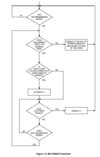The IC that is used in the receiver is no longer made. ( MC145028P if you care. )
runs on 318 mhz and has open close and stop controls. So it needs 3 outputs.
I am new to this. As in I have never done this type of thing.
We use the boards to open doors and they need to be universal for all trucks.
The newer programmable remote units wont work for what we are doing.
The remotes are still available but the receiver boards are not.
Any help would be great.
Thanks
runs on 318 mhz and has open close and stop controls. So it needs 3 outputs.
I am new to this. As in I have never done this type of thing.
We use the boards to open doors and they need to be universal for all trucks.
The newer programmable remote units wont work for what we are doing.
The remotes are still available but the receiver boards are not.
Any help would be great.
Thanks



